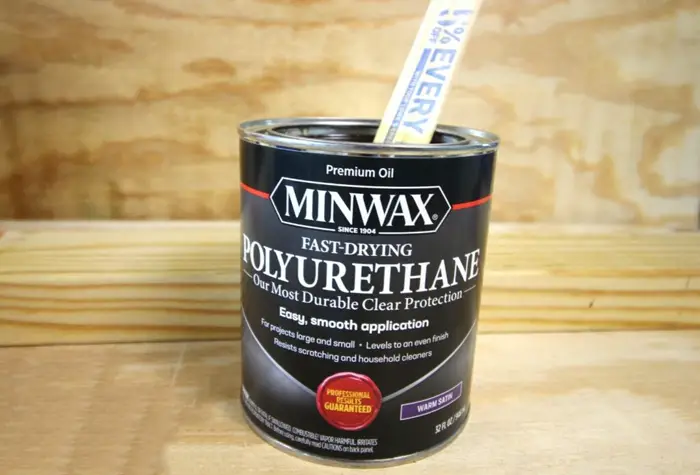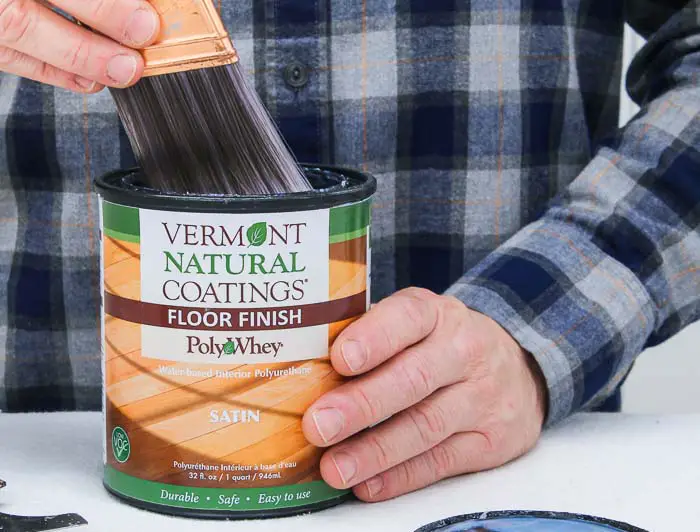Is Polyurethane Safe or Toxic? Unveiling the Verdict on Health Concerns
In today’s world, interacting with polyurethane is inevitable. It is found in things like mattresses, apparel, electronics, furniture, and so on.
But is polyurethane safe or toxic? Well, it depends. Not all polyurethane substances are toxic. For instance, those forms used in packaging food and medical devices adhere to strict regulations. They pose minimal risk to your health. On the other hand, other forms contain volatile organic compounds. These emit harmful gasses that contribute to air pollution.
In this article, we will decipher the polyurethane puzzle. By the end of the write-up, you should be able to make informed decisions that will balance embracing this material and your health.
Understanding Polyurethane: Composition and Varieties
At its heart, this substance is a type of polymer. Its creation involves blending isocyanates and polyols. The two unite and form the foundation of polyurethane’s dynamic nature.
Polyurethane does not settle in a single state. Depending on how you mix these two, the substance can be used as a coating, soft cushion, or adhesive. Here is a breakdown of the varieties available:
- Flexible foam: This type is used in bed mattresses, acoustic panels, soundproofing foams, and furniture cushions. Diisocyanates are used to produce this variety. Various catalysts and surfactants are added to influence the texture and density of the foam.
- Rigid foam: This variety is used for insulation. It lines your walls or roofs to keep your house cool in summer and warmer in winter. Its unique composition is a result of using baymer polyol and desmodur isocyanate.

The result is a closed-cell structural foam that is excellent at trapping air.
- Coating paint: This substance also has a tougher role as a coating. It acts as a shield, protecting surfaces from wear, tear, and other damaging elements.
This type is manufactured with a polyurethane resin, UV additives, glycol, and xylene. It can be found in boat paints, oil and gas pipe coating paints, and other protective coatings.
- Adhesive: The adhesive type uses resin and a hardener. It is best for projects that require a bond to withstand stress, temperatures, and constant movements. As such, it can bond wood, metals, plastics, and other materials.
- Elastomers: This type is manufactured via RIM (Reaction Injection Moulding). The ingredients are liquid polyols and isocyanates. The result is a substance that is flexible and resilient.
It’s similar to rubber and can stretch without breaking. Elastomers can be found in your shoe soles, seals, and gaskets.
Is Polyurethane Safe or Toxic? Exploring Why It Is Safe

Below are reasons why you should not be worried about this substance in your items:
1. Regulations and Testing
Your safety is not left to chance. Vigilant guardians regulate it. For instance, EPA (Environmental Protection Agency) oversees the use of polyurethane and other chemicals. And it’s powered by the Toxic Substances Control Act.
This act requires all manufacturers to provide information about chemical substances in their creations. Other international counterparts like the ECHA (European Chemicals Agency) have also set similar European standards.
2. Limited Emissions
That new smell that is on your shoes is not left unchecked. Manufacturers design all products to emit minimal amounts of volatile organic compounds (VOC). Also, agencies like the California Air Resources Board (CARB) have regulations for these emissions.
3. Stability
Unlike other materials that degrade over time and turn into hazardous chemicals, this is not true for polyurethanes. They will not break down into any chemicals that will pose a risk to you. This stability contributes to its overall safety.
4. Biocompatibility
Polyurethane is compatible with your body’s living tissues. For instance, if it is in seals or gaskets used in catheters, prosthetics, and so on, it will not react with your body. Also, your body cells will not perceive it as a foreign material. Instead, they will coexist peacefully with minimal rejection.
Moreover, the FDA regulates any part that will come into contact with your living tissues (Food and Drug Administration). Whether it is a polyurethane catheter, pacemaker, or implant, it must pass this body’s strict regulations on toxicity to humans.
Safety Concerns of Polyurethanes

Below are the concerns with this component:
1. VOC Emissions
These are particularly present in new products. The faint smell you perceive when unwrapping new items is usually VOC compounds being released.
These emissions have been shown to cause eye, throat, and nose irritations. They also result in headaches, nausea, and coordination loss. You will have liver, kidney, and nervous system damage in severe exposures.
However, VOC emissions from polyurethane are minimal in this decade. If you have proper ventilation, it will quickly disperse this emission as your product ages.
2. Uncured Polyurethane Effects
Uncured polyurethanes are found in adhesives and coatings. These release isocyanates, which are dangerous to your body and skin. Isocyanates lead to respiratory irritation and skin sensitization. They have even been shown to cause occupational asthma.
But you should not be worried about this type as it is not found in the items you use every day. Your foams, seals, and other polyurethane products have been cured.
Safety Tips on Handling Polyurethane Products

Use the following tips to stay safe when handling these products:
1. Know Your Product
Before you dive in, understand whether the product you are dealing with is cured or uncured. Cured products have undergone chemical reactions that make them stable and safe.
2. Proper Ventilation
When unwrapping new products, do so in an area with good airflow. Adequate airflow helps dissipate fumes and odor emitted from those products.
3. Protective Gear
This measure is only for uncured products. You have no reason to wear gloves just to unwrap your new shoes.
Protective gear like gloves adds a layer of safety when handling uncured products. As for gloves, we recommend using nitrile as they resist chemicals in many uncured products.
If you are using paints, consider face masks and protective glasses. On the other hand, safety goggles prevent the accidental splashing of harmful chemicals into your eyes.
4. Follow the Instructions
Product labels and instructions are like your safety roadmap. Follow them diligently. They guide how you should use the product, ventilation requirements, and any precautions you should take.
5. Safe Storage
Uncured products need to be stored away from your house. If you choose to have them in your house, they must be in a well-ventilated area.
Such items should also be kept away from children. Remember, they emit VOCs, which could be catastrophic when inhaled by small kids.
6. Dispose Responsibly
When you are done using cans that contain uncured polyurethanes, you need to dispose of them well. Do not just throw them into your dustbin. Wrap them with a piece of air-tight polythene and dispose of them in a dustbin made for toxins.
If you do not have such kind, just label the can as toxic so the person handling garbage is extra careful with it.
Uncured Polyurethane Safer Alternatives

As seen above, uncured polyurethane is the primary concern of this compound. You can stay safe by replacing it with other safer alternatives:
- Water-based adhesives and coatings
- Low-VOC paints and finishes
- Silicone adhesives and sealants
- Eco-friendly coatings
- UV-cured adhesives
- Natural oils and waxes
- Acrylic coatings and sealants
- Contact cement
- Soy-based adhesives
- Epoxy resins with low VOCs
- Vegetable oil-based finishes
- Water-based wood stains
- Clay-based paints
- Bio-based adhesives
FAQs
Here are answers to questions that might come up as you read about polyurethane.
Q: How can I ensure the polyurethane products meet safety regulations?
Look for certifications or labels that indicate compliance with industry standards. Some of these labels include those of agencies like the American Chemistry Council and EPA. These organizations’ logos let you know that the product has been approved to meet safety standards.
Q: Can prolonged exposure to polyurethane lead to cancer?
No. Prolonged exposure to this element will only lead to inhalation of VOCs. These contribute to air pollution. However, no scientific research or evidence supports a link between polyurethane and cancer. So, there were no cancer risks.
Q: How long does uncured polyurethane emit VOCs?
The duration of emission varies based on factors like product composition, ventilation, and curing conditions. VOCs are most prominent in the initial phase of the application. They will have dropped down to a safe level within a few hours to three days.
To ensure they drop to safe levels faster, ensure you have adequate ventilation.
Conclusion
The above sheds light on the question, is polyurethane safe or toxic? This compound is generally safe for your consumption. The cured type contains few to no VOCs. It is also stable and will not lead to any effects. The uncured type is also safe if handled with care and follow safety precautions.
From stringent regulations to few emissions and stability, the verdict is clear. So, when you encounter polyurethanes in your daily life, do not fret. They are safe and will not lead to any effects, especially if cured.





